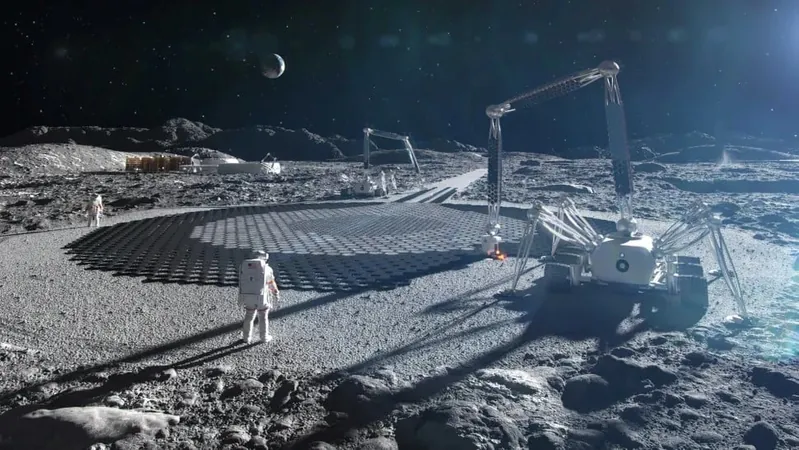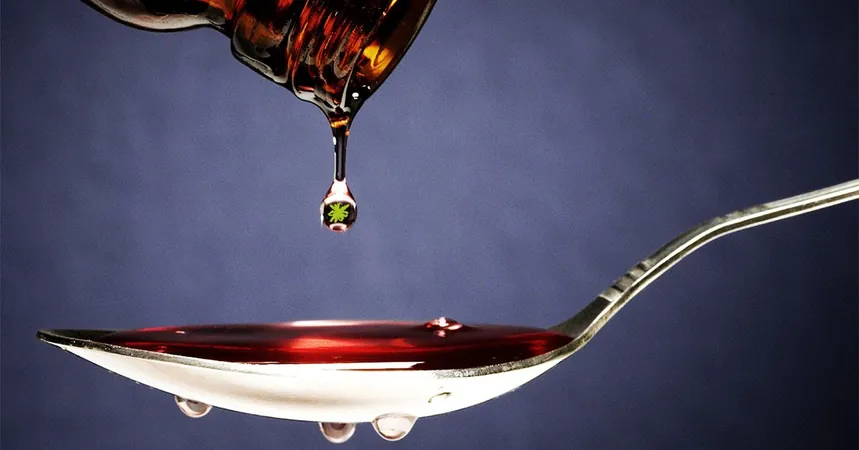
Moon Mining Revolution: Is Waste the Key to Sustainable Colonization?
2025-05-29
Author: Nur
Unlocking the Moon's Potential with ISRU
In-situ resource utilization (ISRU) is hailed as a game-changer for establishing a sustainable human presence on the Moon. While its importance and the potential impact of its by-products are still being debated, a groundbreaking study by Evangelia Gkaravela and Hao Chen from the Stevens Institute of Technology sheds new light: ISRU could be the golden ticket—if we can effectively manage the waste.
More Than Just a Resource Hub
The Moon is not only about resource extraction or extra living space; it offers a unique vantage point in our solar system. Its proximity to Earth allows easy access, while its isolation shields it from terrestrial disturbances, making it a haven for scientists exploring cosmic mysteries. Particularly intriguing is the Moon's role in studying planetary formation—understanding its origins could unlock secrets of more complex celestial bodies. Additionally, regions like the 'dark side' provide an ideal setting for radio astronomy without Earthly interference.
Waste Not, Want Not: The Dark Side of ISRU
However, the potential waste generated by ISRU could pose significant challenges. Dust from these operations might disrupt telescope accuracy, and resource extraction could damage geological formations critical to understanding the Moon's past. The creation of 'slag' material raises further worries, as it could quickly accumulate and complicate storage for future lunar colonies.
Examining ISRU Processes: What's at Stake?
Gkaravela and Chen examined three distinct ISRU methods: Molten Regolith Electrolysis (MRE), Soil/Water Extraction (SWE), and Direct Water Electrolysis (DWE). Their analysis mapped out inputs, outputs, and waste products, applying a cost function to weigh the advantages of sourcing resources in-situ against traditional methods of transportation from Earth.
The Game-Changer: MRE, SWE, and DWE Explained
MRE, the cornerstone of ISRU, involves melting lunar regolith to extract oxygen and metals. While this method produces slag, it can also yield silicon useful in solar cell manufacturing. SWE focuses on extracting water from lunar soil, yielding dried regolith and various chemicals as byproducts. On the other hand, DWE efficiently breaks down the extracted water into hydrogen and oxygen with minimal waste.
Balancing Costs and Benefits
The innovative framework employed by the researchers aims to minimize total mission costs by crunching numbers on waste disposal, recycling options, and overall resource management. Strikingly, they found that even accounting for waste management, ISRU remains dramatically cheaper than transporting resources from Earth. While quantifying its impact on vital scientific research poses challenges, the study suggests that relying on local resources for necessities—like water and oxygen—remains economically viable, even if mitigation strategies triple some costs.
A New Era of Space Exploration?
This research reinforces a long-held belief among space enthusiasts: utilizing resources locally is far more practical than launching materials from Earth. Not only are the costs of waste management trivial compared to the exorbitant expense of space launches, but employing ISRU also mitigates ecological damage caused on our home planet in the resource extraction process. If we can advance ISRU and waste management technologies, we could pave the way for lunar colonization—and potentially even beyond!


 Brasil (PT)
Brasil (PT)
 Canada (EN)
Canada (EN)
 Chile (ES)
Chile (ES)
 Česko (CS)
Česko (CS)
 대한민국 (KO)
대한민국 (KO)
 España (ES)
España (ES)
 France (FR)
France (FR)
 Hong Kong (EN)
Hong Kong (EN)
 Italia (IT)
Italia (IT)
 日本 (JA)
日本 (JA)
 Magyarország (HU)
Magyarország (HU)
 Norge (NO)
Norge (NO)
 Polska (PL)
Polska (PL)
 Schweiz (DE)
Schweiz (DE)
 Singapore (EN)
Singapore (EN)
 Sverige (SV)
Sverige (SV)
 Suomi (FI)
Suomi (FI)
 Türkiye (TR)
Türkiye (TR)
 الإمارات العربية المتحدة (AR)
الإمارات العربية المتحدة (AR)